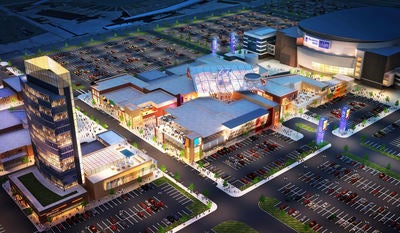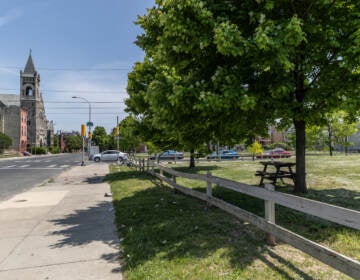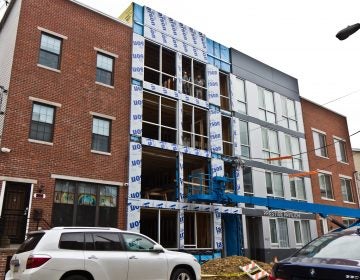PCPC OKs new transit zoning, Parkside Historic District

Oct. 20
By Thomas J. Walsh
For PlanPhilly
The Philadelphia City Planning Commission, during its monthly meeting Tuesday, signed off on a significant change to the way a city agency does business with the public, listened to preliminary plans for a hotel project in University City and cogitated upon a major development project slated for the stadium district in South Philadelphia.
The commission considered and approved a dozen or so zoning issues, tabled another for the time being, and try to wrap its collective head around the “Integrated Planning and Zoning Process,” a 25-year plan described by senior Planning Commission staffer Alan Urek as “an effort to align long-range planning, citywide, with smaller scale district plans.”
Also, add this to that equation: marry the plans with the ongoing zoning reform process.
Wait now. There were a few other things besides: among them, to initiate the “Citizens Planning Institute,” which is to be a “formal structure for educating and engaging citizens,” with “front-end participation “ and even course work offered over three sessions each year.
It was a dizzying back-and-forth between the abstract and the particular. The commission’s executive director, Alan Greenberger – laden with triple duty under the mantle of “acting deputy mayor” status for the city’s commerce and economic development departments – could only afford an hour or so between other cabinet level activity. But he called what Urek described a “particularly remarkable effort” given that it is the first time in 50 years this type of thing has been done, and in an atmosphere of state and city budgetary insanity, to boot.
Prior to the passage of a preliminary state budget in Harrisburg last month, there were days that the entire Planning department, along with the full staffs of other city agencies, did not know if they would have their jobs from one day to the next.
“This is what a Planning Commission should be doing,” Greenberger said in congratulating his staff.
“It’s important to get moving on this,” said Urek, the director of the Planning Commission’s strategic planning and policy division. “There has been no wholesale comprehensive look at the city in 50 years. … Cities are beginning to offer the opportunity for a much higher quality of life.”
By the end of the year, planners will be wrapping up the “Imagine Philadelphia: Laying the Foundation” initiative, and moving into a series of 19 separate district plans (an increase from the traditional 12 districts) that will take five to six years to complete.
The larger scale comprehensive plan, “Philadelphia 2035,” will be aligned with the Delaware Valley Regional Planning Commission’s “Connections” project and will be based on “sound yet aspirational forecasts,” Urek said. “It will be holistic, visionary and sustainable in its focus,” dwelling on city / regional relationships, transportation, housing, preservation; public service and economic development.
“We’re very excited about it,” Urek said. “You’ll be hearing a lot more about it going forward.”
ZBA
Zoning issues dominated the meeting. Among them was a bill to reduce the number of members of the Zoning Board of Adjustment that constitute a quorum, introduced by three City Council members in September.
Of the six members of the ZBA, five are appointed by the mayor – the sixth is the head of the city’s department of Licenses & Inspections. A quorum is achieved by the presence of four members. The bill would reduce that to three and make the L&I chief an alternate member. The measure would have to be approved by voters, and would not appear on ballots until May 2010. The commissioners voted to approve the change without comment.
Philly Live
The commission approved an amendment to the Sports Stadium District Master Plan allowing a nine-building development for the “Philly Live” complex, to be located between the Wachovia Center and Citizens Bank Park off of Pattison Avenue, including some land to be cleared by the demolition of the Spectrum.
The stadium plan, from owner-developers the Cordish Co. of Baltimore and Comcast-Spectacor, “would authorize the fine tuning of the Sports Stadium District Master Plan as approved in 1994.”
Though no formal plans were submitted 15 years ago, the concept of a mixed-use sports and entertainment area was introduced. Tuesday’s outline includes nine buildings totaling almost 400,000 square feet, with a 300-room hotel.
“The structures are proposed to be constructed in a fashion which will provide a practical and visual connection between the existing Wachovia Center and Citizens Bank Park,” the commission’s staff wrote, explaining its recommendation for approval.
No designs or plans were shown at the meeting aside from a rough blueprint of how the block would be situated. Bill Kramer of the Planning Commission said designs would be presented at a later meeting.
Greenberger said the commissioners were only being asked to “confirm that the approach – the general design concept – is in accordance with what was approved in 1994.” They were not being asked to consider traffic operations (on the streets surrounding the venue and on the parking lots themselves), he said, nor were they being asked to weigh in on signage, an issue that can only be addressed once tenants have been signed.
Greenberger said the overall Cordish plan was not ideal, but that the company is working with the city and he believes it will be a success. With 7.5 million people coming to the stadium complex each year, it is a bigger draw than even the Independence Mall historic area.
“We don’t push it very hard,” Greenberger said. “For me this is very much about urbanizing – bringing the city to the sports district.”
Parkside
The commission approved of a plan by the Philadelphia Historical Commission, working with the Preservation Alliance of Greater Philadelphia and neighborhood groups, to create the Parkside Historic District, in the area roughly bounded by Parkside Avenue and Viola Street, and 41st Street and Belmont Avenue, adjacent to Fairmount Park and the Memorial Hall / Please Touch Museum area.
Built between 1890 and 1900, the homes constitute what was envisioned as “a unique German community,” said Erin Coté, a historic preservation planner for the city.
Historical Commission Executive Director Jonathan Farnham said that other districts to be designated as historic are queued up for consideration in 2010, covering neighborhoods in Overbrook Farms, Spruce Hill, Washington Square West and Tacony. All of those areas are much larger in scope than Parkside, with more than 1,000 homes in each of them.
Barnes, Strawbridge’s
To start the meeting, Gary Jastrzab told the commissioners that the design of the Barnes Museum for the Benjamin Franklin Parkway is moving forward with the Art Commission. “We don’t anticipate any City Planning Commission actions being necessary for that development to proceed,” Jastrzab said. “But… we’re trying to schedule a full presentation of that design for you at a future meeting.”
Jastrzab also said that the old Strawbridge & Clothier site at 8th and Market would be reverting back to its original zoning classification of “C5.” It had been changed to “CED” (commercial entertainment district) when it was thought that Foxwoods would be siting its casino there. The reversal reflects the decision by the state Gaming Control Board to deny the casino ownership its intended re-location there.
The commissioners also voted to recommend further study of a new overlay template, the “Transit-Oriented Development District,” amending the commercial district portion of the existing zoning code. And they heard the opening pitch for a new 131-room Hilton Homewood Suites extended-stay hotel for 41st and Walnut streets, a project that has migrated from its original intended location at 40th and Pine.
Zoning Remapping Bill No. 090471: To amend the Philadelphia Zoning Maps by changing the zoning designations of certain areas of land located within an area bounded by Ridge Avenue, Sedgley Avenue, Diamond Street, and Glenwood Avenue (Introduced by Councilmember Darrell Clarke on June 4, 2009
Contact the reporter at thomaswalsh1@gmail.com.
WHYY is your source for fact-based, in-depth journalism and information. As a nonprofit organization, we rely on financial support from readers like you. Please give today.






